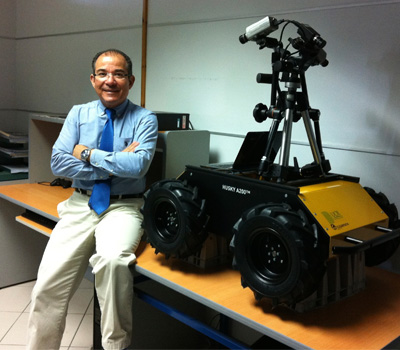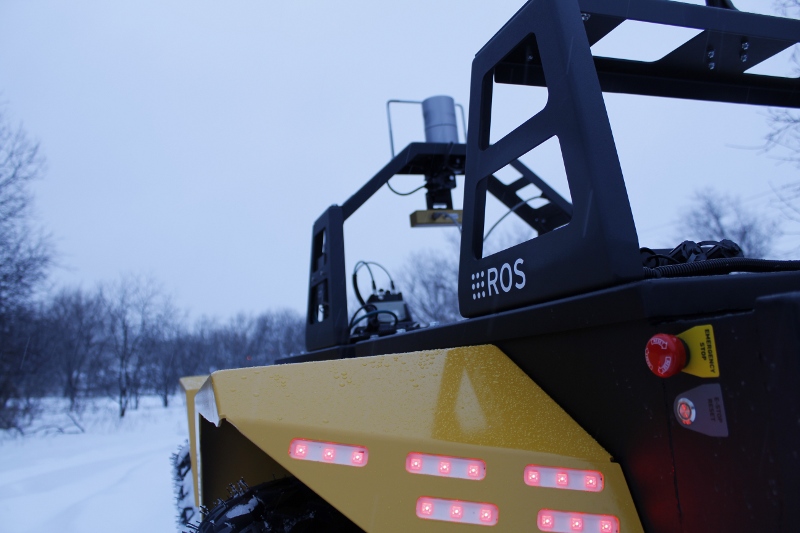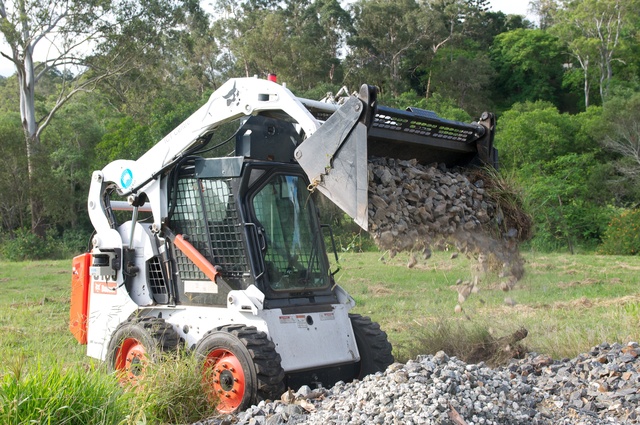From Eero Heinänen
The TUTRIM project was motivated by the possibilities to increase productivity and safety at worksites by using autonomous mobile robots. With cooperation between four departments of Tampere University of Technology (Intelligent Hydraulics and Automation, Automation Science and Engineering, Mechanical Engineering and Industrial Systems, Signal Processing) we implemented an unsupervised, autonomous multi-robot worksite in the domain of civil engineering.
The main task was to get the independent, autonomous and heterogeneous robots to cooperate to achieve a common goal in a partially known environment. For this purpose ROS was a reasonable choice as it enables different communication types to be used and it acts as an abstraction layer in the message exchange between dissimilar robots. Also, we used ROS Industrial to integrate one industrial robot to the system. Other components of the worksite are a wheel loader, a micro aerial vehicle and a kinect-based localization system at the industrial robot station.
For more information please see: http://vision.cs.tut.fi/projects/tutrim/index.html









 Weeding in organic orchards is a tedious process done either mechanically or by weed burning. Researchers at University of Southern Denmark and Aarhus University created the
Weeding in organic orchards is a tedious process done either mechanically or by weed burning. Researchers at University of Southern Denmark and Aarhus University created the 